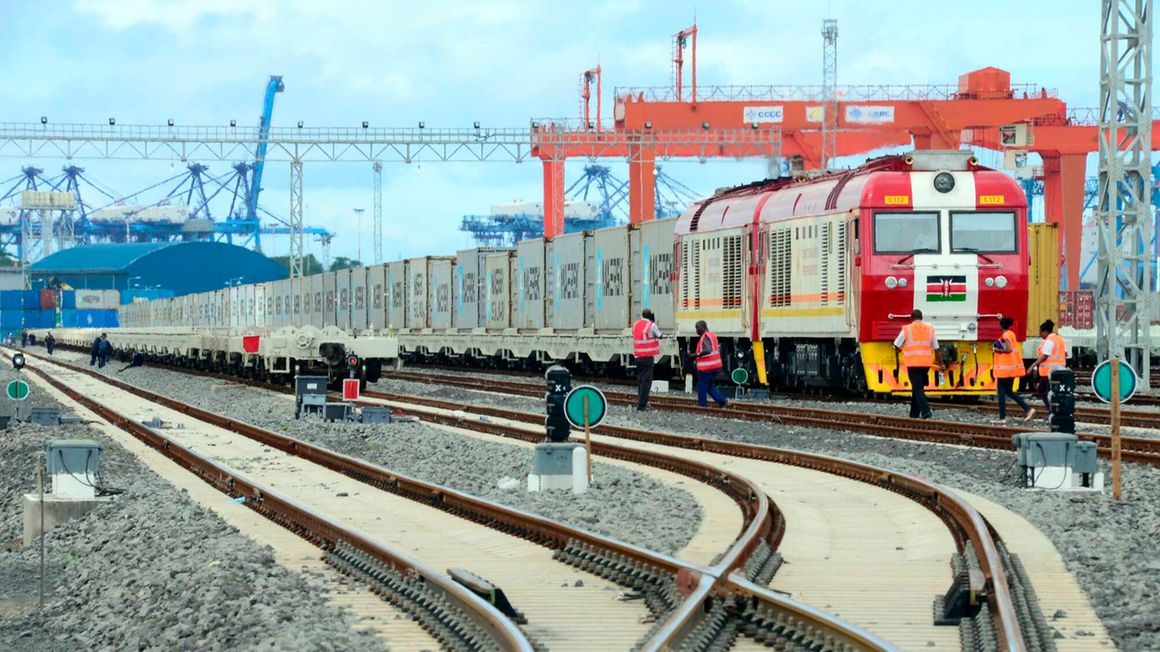
President William Ruto’s administration has stepped up expenditure on the Nairobi-
Mombasa Standard Gauge Railway (SGR) with a plan to hit Sh100 billion in the next three years to revamp the line, build new sidings and buy more locomotives and cargo wagons.A report by the National Treasury shows that the Transport Ministry under Kipchumba Murkomen as the Cabinet Secretary will receive an additional Sh97.7 billion for the “Development of Standard Gauge Railway” between July this year and June 2026.
This reverses a trend where the previous government had cut allocations to the SGR and will push the spending related to this line beyond Sh780 billion by June 2026.
Beginning July the government has allocated Sh37.4 billion from the Railway Development Levy Fund (RDLF) for the Nairobi-Mombasa SGR.
The bulk of the allocation, according to the breakdown shared with the Business Daily from Transport, has been earmarked for the acquisition of additional locomotives and freight wagons at a cost of Sh11.9 billion.
Kenya last bought its 1,620 locomotives and wagons from China in 2018.
The allocations to Transport show that the government had no plans to extend the SGR beyond Naivasha to Kisumu and finally Malaba in the next three years.
Read: SGR's one year revenue up 6.3pc to Sh15 billion
The rest of the funds, which have been allocated under the “Mombasa to Nairobi SGR” vote will largely be used to build new feeder lines and rehabilitate the old metre gauge railway (MGR) lines.
Charged at the rate of two percent, the Railway Development Fund (RDF) is levied on all goods imported into the country for home use.
“The purpose of the levy shall be to provide funds for the construction of a standard gauge railway network in order to facilitate the transportation of goods,” reads part of the Miscellaneous Fees and Levies Act which establishes the kitty.
Budgetary allocations for the acquisition of locomotives and wagons are projected to increase to Sh16 billion in Financial Year 2024/25 and Sh22.2 billion in the Financial Year 2025/26 taking the total allocations for the three years to Sh50.1 billion.
Another Sh5.9 billion will be spent on the rehabilitation, remanufacturing or overhaul of locomotives, wagons and coaches, according to a breakdown of the Sh37.4 billion allocation.
The new feeder lines will link some of the sections of the modern railway such as the Mombasa SGR Terminus to critical urban centres.
This includes Sh4.48 billion for the construction of the Riruta-Lenana-Ngong Railway Line and Sh2.96 billion for the construction of a Railway Metro Line linking Embakasi Station and Ruai town.
In the next 12 months, the government will also build a new 2.8-kilometre Metre Gauge Railway (MGR) link from Mombasa SGR Terminus to Mombasa MGR station at a cost of Sh2.5 billion.
These funds will also be used to construct a railway bridge across the Makupa causeway that links Mombasa Island to the Kenyan mainland.
A new Metre Gauge Railway line linking the Naivasha Inland Container Depot to the existing Longonot Railway Station has been allocated Sh1.6 billion in the next financial calendar.
The construction of a Railway Metro Line connecting Athi River Station to the East African Portland Cement has been allocated Sh400 million.
This is projected to rise to Sh1.17 billion in the Financial Year starting July next year and Sh1.36 billion in Financial Year 2025/26.
Another Railway Metro Line connecting Athi River Station to NSSF and Mavoko will absorb Sh450 million, a figure that is set to increase to Sh1.56 billion and Sh1.89 billion in 2024/25 and 2025/26.
The money will also be used to rehabilitate the line between Longonot and the Western border town of Malaba, which is aimed at facilitating the movement of cargo from the port city of Mombasa to Uganda.
Also in this border town, which is prone to congestion, the State plans to build Malaba Cargo Handling Yard. Around Sh474 million has been set aside for this project.
Other spending items will be the acquisition of plant and equipment, which shall take up Sh3.8 billion in the next fiscal year, Sh1.1 billion in Financial Year 2024/25 and Sh600 million in the Financial Year 2025/26.
A logistics hub is planned for Athi River with the State putting aside Sh1.125 billion.
Read: Sh51 billion SGR repayment compounds forex migraine
The allocation for this planned logistics hub will reduce to Sh375 million in the year ending June 2025.
Initial plans were to extend the SGR to Uganda, however, this has since stalled with the Treasury not getting funds for the extension to Kisumu and finally to Malaba.
Mr Murkomen at the beginning of this year said the Kenya Kwanza administration in partnership with the Chinese government is keen on extending the SGR from Naivasha’s Mai Mahiu to the border of Uganda through a five-year plan that will see the multibillion-dollar railway line run through Narok, Bomet, Nyamira, Kisumu, and Malaba.
“In the long run, we would like to complete the connection of the SGR from Suswa to Kisumu through Bomet, Nyamira, parts of Kisii and later to Malaba."
Later, we can think of upgrading the existing MGR via Nakuru to Kisumu and via Eldoret to Malaba,” he said on December 15.
With the additional expenditure, the government hopes the country’s most expensive piece of infrastructure will help to grow the economy and improve the standard of living for Kenyans.
The administration of former President Uhuru Kenyatta borrowed Sh656.1 billion ($5.1 billion) in three tranches for the construction of the two phases of the SGR, contributing to a major build-up of Kenya’s stock of debt.
Kenya will use Sh11.9 billion to acquire rolling stock that will be used to ferry cargo on the SGR from Mombasa to Naivasha.
→ dakure@ke.nationmedia.com

No comments:
Post a Comment